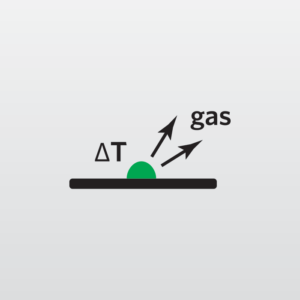Instrumental Gas Analysis (IGA)
Home » Our Techniques » Spectroscopy » IGA
Instrumental Gas Analysis (IGA) measures gas-forming elements (C, H, O, N and S) present in solid materials from ppm to percentage levels. A high temperature furnace is used to rapidly heat the sample and thereby convert certain elements into volatile forms in order to separate, detect and measure them.
Carbon and sulfur are measured based on combustion and infrared detection during Instrumental Gas Analysis. The analytical method is based on the complete oxidation of the solid sample by combustion in an oxygen plasma (above 2000°C). The sample is placed in a ceramic crucible in a high frequency induction furnace where it is heated. The combustion of the sample releases various gases, which are measured by four infrared detectors. The analysis of SO2 determines the sulfur content. The analysis of CO and CO2 determines the carbon content.

Nitrogen, oxygen and hydrogen are measured using inert gas fusion or solid carrier gas heat extraction. The sample is placed in a graphite crucible and inserted into a furnace, where it is held between the electrodes. After purging with an inert gas (He or Ar), a high current is passed through the crucible, creating a temperature increase (above 2500⁰C). Any gases generated in the furnace (CO, CO2, N2 and H2) are released into a flowing inert gas stream, which is directed to the appropriate detectors: infrared for O measured as CO and CO2, or thermal conductivity for N and H. Instrument calibration is performed using known reference materials to bracket the concentration range of materials to be tested.
Ideal Uses of IGA
- H, C, S, N and O determination in solids, powders or particulate materials
- Fractional gas analysis to quantify H, O and N of various bonding chemistry and environment
- For differentiating surface and bulk concentrations of H, O and N
Strengths
- Accurate determination of gas-forming elements from ppm to wt%
- Can provide H and O environment information (surface or bulk) using temperature programs and reaction agents
Limitations
- Requires large amount of sample (10 mg to g range)
IGA Technical Specifications
- Signal Detected: Infrared absorption and/or thermal conductivity
- Elements Detected: H, C, N, O and S
- Detection Limits: ppm
- Depth Resolution: Bulk technique
Would you like to learn more about using Instrumental Gas Analysis (IGA)?
Contact us today for your Instrumental Gas Analysis (IGA) needs. Please complete the form below to have an EAG expert contact you.